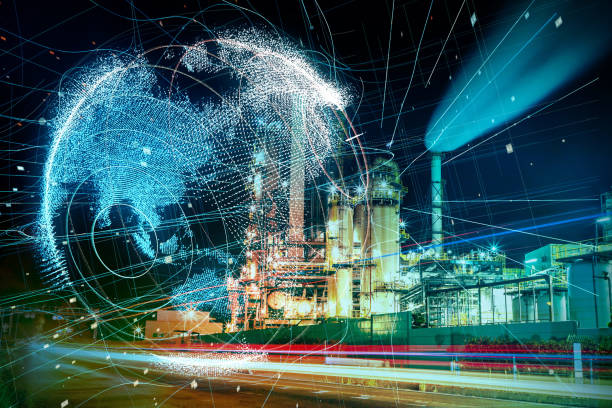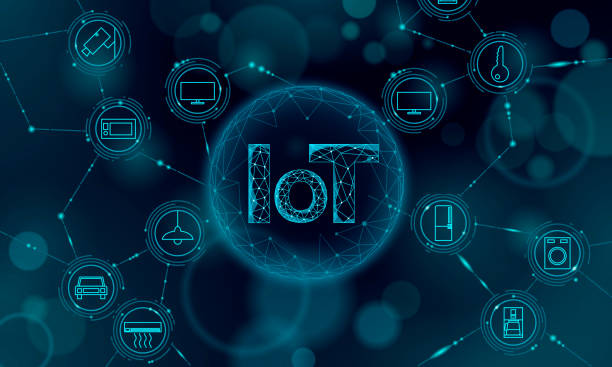The Internet of Things (IoT) represents one of the most transformative technological advancements of the 21st century. By connecting everyday objects to the internet, IoT enables a seamless exchange of data and interaction between devices, creating a more intelligent and responsive world. This article explores the concept of IoT, its applications, benefits, challenges, and future prospects.

Understanding the Internet of Things (IoT)
The Internet of Things (IoT) refers to the network of interconnected physical devices that communicate and exchange data with each other through the internet. These devices, equipped with sensors, software, and connectivity, can collect, send, and receive data, enabling smarter operations and decision-making. Key components of IoT include:
- Devices and Sensors: IoT devices are equipped with sensors that collect data from the physical environment. These devices range from everyday household items like smart thermostats and wearable fitness trackers to industrial machinery and environmental monitoring systems.
- Connectivity: IoT devices connect to the internet through various communication technologies, including Wi-Fi, Bluetooth, cellular networks, and low-power wide-area networks (LPWAN). This connectivity allows devices to share data and interact with each other.
- Data Processing: The data collected by IoT devices is processed and analyzed to extract meaningful insights. This processing can occur on the device itself (edge computing) or in centralized data centers (cloud computing).
- User Interfaces: IoT systems often include user interfaces such as mobile apps or web dashboards that allow users to monitor and control their devices remotely.
Applications of IoT
- Smart Homes: IoT has revolutionized home automation, making homes smarter and more efficient. Smart thermostats, lighting systems, and security cameras can be controlled remotely, while smart appliances offer convenience and energy savings.
- Healthcare: In healthcare, IoT devices are used for remote patient monitoring, wearable health trackers, and smart medical equipment. These devices enable continuous health monitoring, early detection of health issues, and personalized treatment plans.
- Industrial IoT (IIoT): IoT applications in industrial settings, known as Industrial IoT (IIoT), enhance operational efficiency through predictive maintenance, real-time monitoring, and automation. IIoT systems optimize production processes, reduce downtime, and improve safety.
- Smart Cities: IoT contributes to the development of smart cities by improving infrastructure and services. Applications include smart traffic management, intelligent waste management, and environmental monitoring, all aimed at enhancing urban living and sustainability.
- Agriculture: IoT is transforming agriculture through precision farming techniques. IoT devices monitor soil conditions, weather patterns, and crop health, enabling farmers to optimize irrigation, fertilization, and pest control.
Benefits of IoT
- Enhanced Efficiency: IoT devices automate routine tasks and processes, leading to increased operational efficiency. In homes, businesses, and industries, IoT systems streamline operations and reduce manual intervention.
- Improved Decision-Making: The data collected by IoT devices provides valuable insights that support informed decision-making. Real-time data analysis enables timely responses and proactive management of various processes.
- Cost Savings: IoT can lead to significant cost savings by optimizing resource usage, reducing energy consumption, and minimizing maintenance expenses. For example, smart building systems can lower utility bills by managing energy usage more effectively.
- Convenience and Automation: IoT enhances convenience by automating tasks and providing remote control of devices. Users can manage their homes, monitor their health, and control industrial processes from anywhere, at any time.
- Increased Safety: IoT devices improve safety through real-time monitoring and alerts. Smart security systems, wearable safety devices, and environmental sensors enhance safety and security for individuals and organizations.

Challenges in IoT
- Data Security and Privacy: The proliferation of IoT devices raises concerns about data security and privacy. Ensuring that sensitive information is protected from unauthorized access and breaches is crucial for maintaining trust.
- Interoperability: The diversity of IoT devices and standards can lead to interoperability challenges. Ensuring that devices from different manufacturers can work together seamlessly is essential for creating a cohesive IoT ecosystem.
- Scalability: As the number of IoT devices grows, managing and scaling IoT systems becomes more complex. Efficient data management, network infrastructure, and system integration are key to addressing scalability challenges.
- Power Consumption: Many IoT devices rely on battery power, and managing power consumption is critical for maintaining device functionality and longevity. Developing energy-efficient devices and optimizing power usage are ongoing challenges.
- Regulatory and Ethical Issues: The rapid expansion of IoT raises regulatory and ethical concerns related to data ownership, consent, and surveillance. Establishing clear guidelines and regulations is necessary to address these issues and ensure responsible use of IoT technology.
Future Trends in IoT
- Edge Computing: Edge computing, which involves processing data closer to the source rather than in centralized data centers, will play a crucial role in the future of IoT. Edge computing enhances real-time processing, reduces latency, and improves efficiency.
- 5G Connectivity: The deployment of 5G networks will significantly enhance IoT capabilities by providing faster and more reliable connectivity. 5G will support a higher density of connected devices and enable new applications with lower latency.
- AI and ML Integration: Integrating AI and ML with IoT will enable more advanced data analysis and automation. AI-powered IoT systems will enhance predictive analytics, anomaly detection, and decision-making capabilities.
- Blockchain Technology: Blockchain technology can enhance IoT security and transparency by providing decentralized and tamper-proof records of data transactions. Blockchain will contribute to trust and accountability in IoT systems.
- Sustainability and Green IoT: The focus on sustainability will drive the development of green IoT solutions that minimize environmental impact. Energy-efficient devices, renewable energy integration, and sustainable practices will become central to IoT development.

Conclusion
The Internet of Things (IoT) is revolutionizing how we interact with the world, offering unprecedented opportunities for efficiency, convenience, and innovation. By connecting devices and enabling data exchange, IoT is transforming industries, improving quality of life, and driving technological advancements. As IoT technology continues to evolve, addressing challenges related to security, interoperability, and scalability will be essential for realizing its full potential. The future of IoT promises exciting developments that will shape the way we live, work, and interact with our environment.

